Moroccan clothing is full of rich traditions and many of the clothes worn by locals are an integral part of the culture and Moroccan identity.
While numerous Moroccans, especially those from the younger generations, opt to wear modern Western garments for day-to-day life, special occasions and ceremonial events typically see a return to traditions.
Traditional Moroccan clothes are often not only attractive, but the long, loose, and flowing garments are both compliant with religious beliefs and practical for keeping cool in the hot and sunny conditions.
Learn more about the history and use of traditional Moroccan items and perhaps be inspired to buy some local clothing as a souvenir on your next visit to the kingdom.
Djellaba
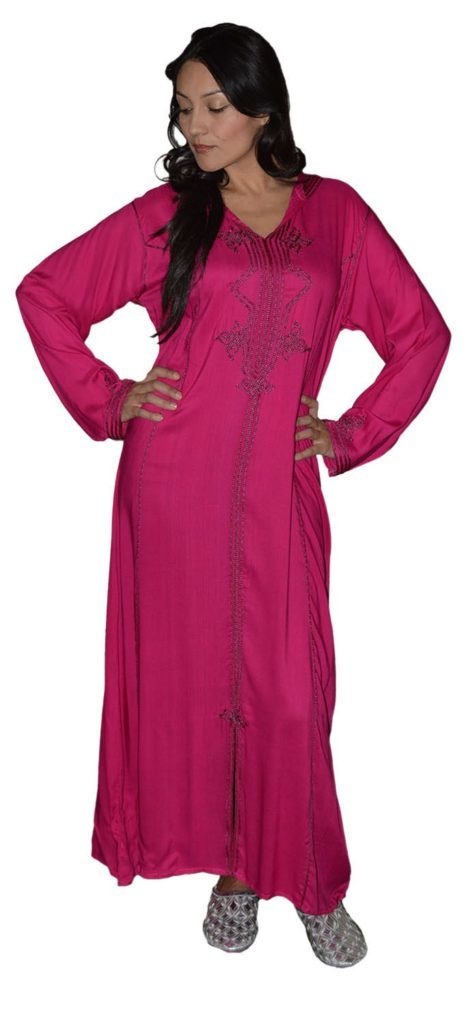
The djellaba may be found in other North African countries as well as Morocco, but it is still one of the most commonly worn items of clothing by Moroccans.
It can be worn by both men and women. The djellaba is a long and loose type of robe that is often worn over the top of other clothes.
It has long sleeves and a pointed hood. The hood helps to provide shade in the sun and keeps people warm in the cold.
In the past, when there were larger numbers of desert-dwelling and nomadic peoples, it prevented sand from being blown in a person’s face too.
Woolen djellabas are the most traditional, but cotton djellabas are becoming increasingly popular too. Naturally, woolen garments are favoured in the cooler winter months, while light-weight cotton dellabas are preferable on hot, sunny days.
Colors vary and the garment can be won in many different settings, from day-to-day activities to at special occasions.
Gandora
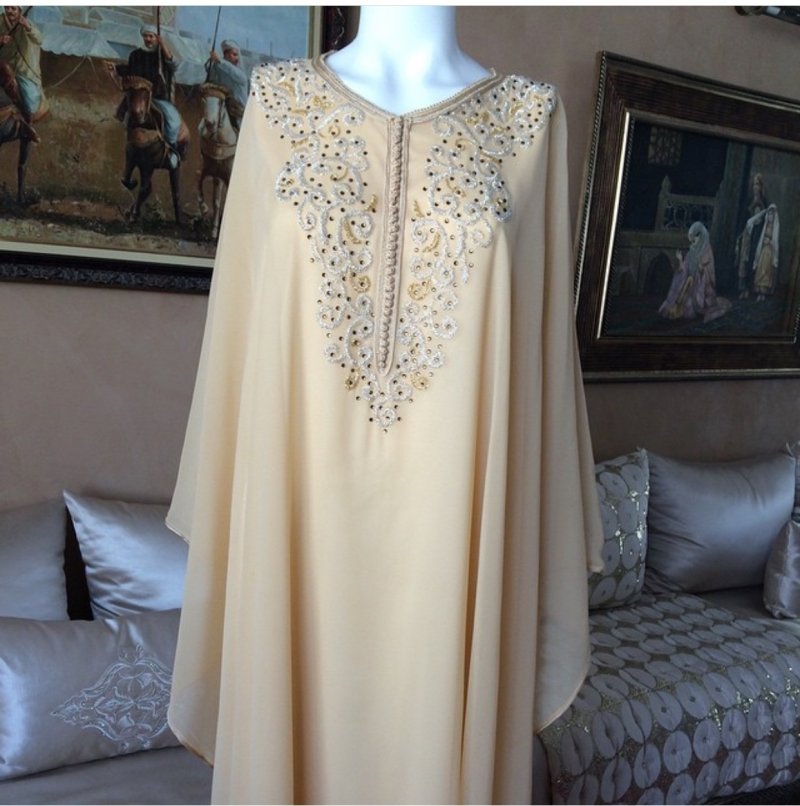
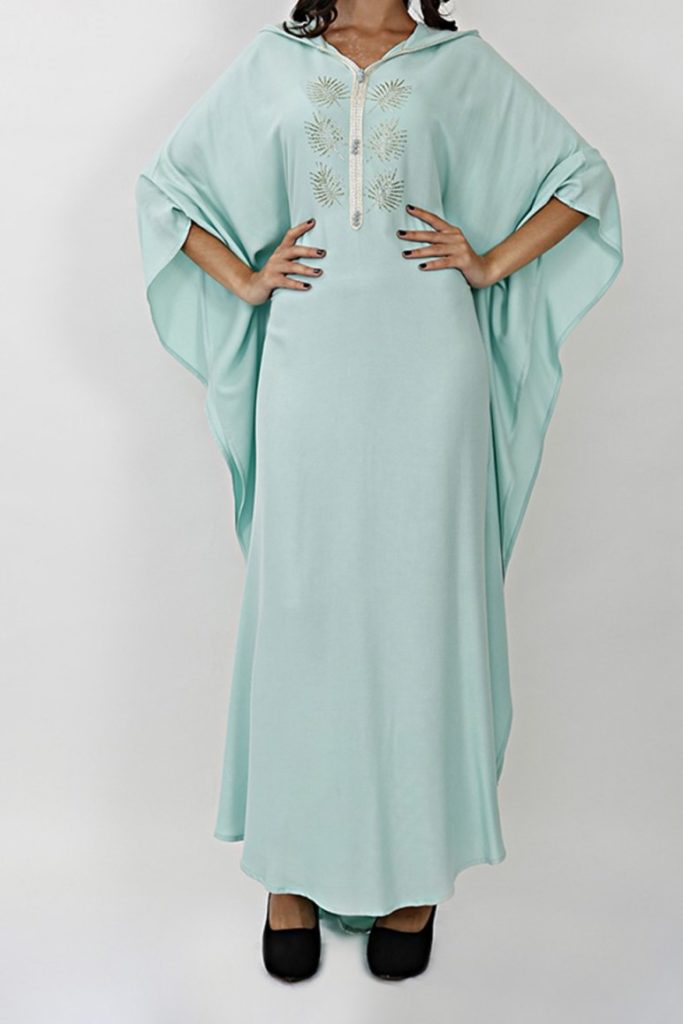
The gandora is similar to a djellaba, with the major differences being that it has shorter sleeves and does not have a hood. It can be worn by people of both sexes and comes in various colors.
It is more commonly worn in the summer months, though typically not for prolonged periods outdoors—the shorter sleeves leave people more at risk of getting burnt by the harsh sun.
Kaftan
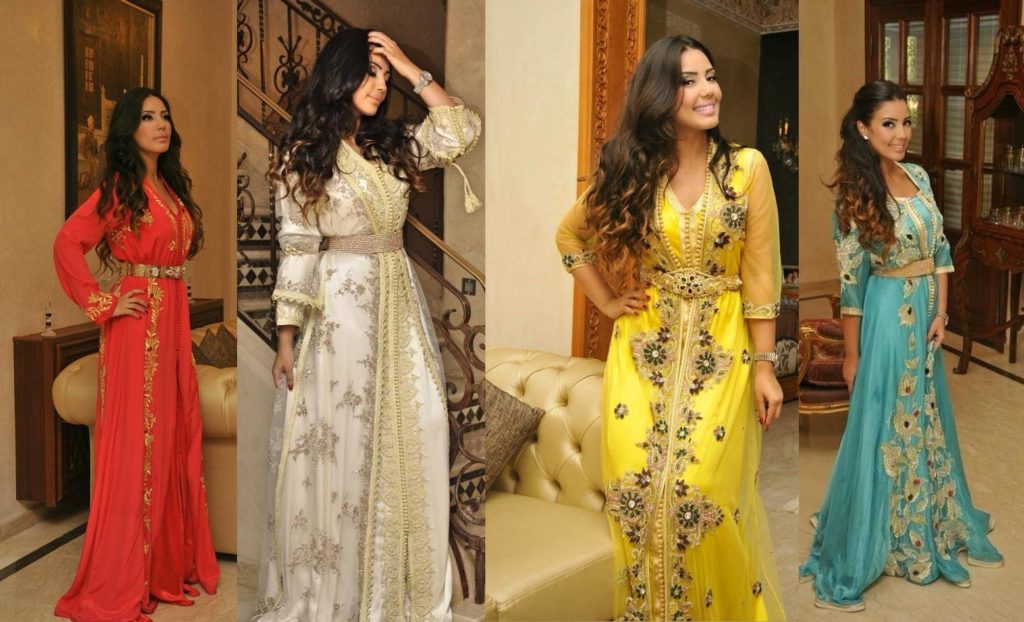
The kaftan is another long and flowing type of robe-like dress worn a lot in Morocco. Unlike the djellaba, though, the kaftan is only worn by women.
Historically, however, it was the ceremonial dress of judges.
The kaftan was also once strongly associated with royalty and nobility, though its use spread to the general populace during the Saadian dynasty.
Kaftans are usually ornate and decorative, with beautiful braiding, beads, and sequins sewn onto luxurious fabrics.
The kaftan is made from various materials, including wool and cotton, but the fanciest kaftans are made from fine silk or luscious velvet.
Kaftans are not generally worn outside the home for performing everyday tasks, rather, Moroccan ladies don an attractive kaftan for special occasions. Plainer kaftans, made from regular materials, may also be in a lady’s casual wardrobe.
In some nations, kaftans are worn as an outer garment, whereas in Morocco they are worn like a dress. Moroccan kaftans may have long or short sleeves, which may be fitted or loose.
Although the kaftan is a loose garment, some ladies add a wide, matching belt to give more shape and definition.
Tackchita
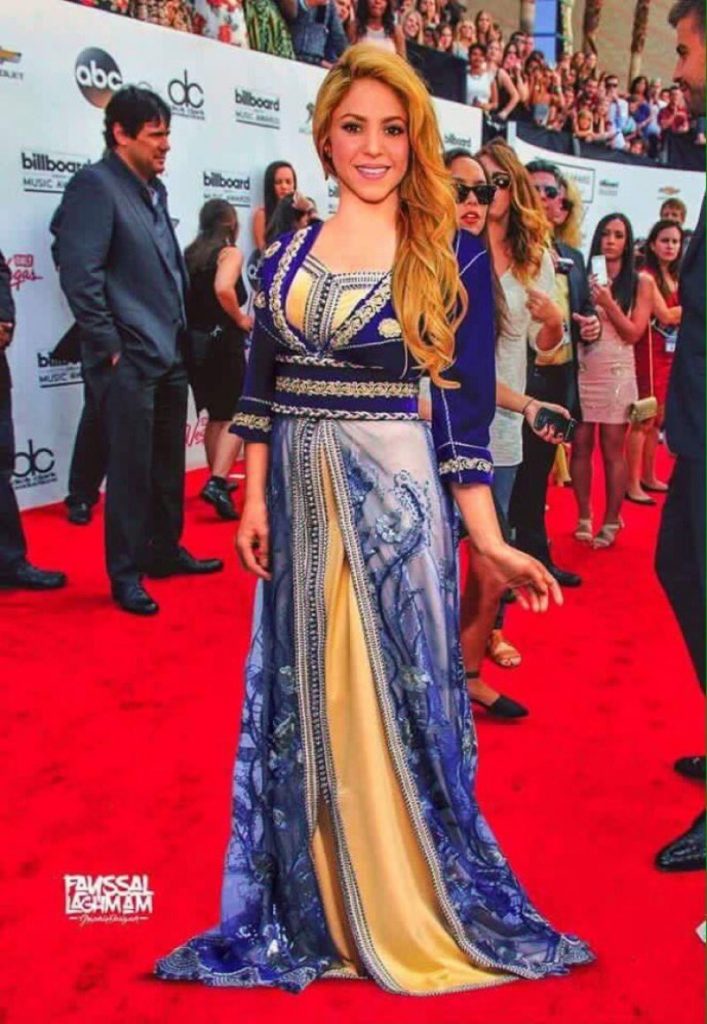
Another Moroccan item of clothing worn by women, the tackchita is perhaps the most formal and beautiful ladies’ garment. It is not an item for everyday wear, but is reserved for special occasions such as weddings.
As with fancy kaftans, the tackchita often has stunning designs and details. A two-piece item of clothing, it has an under-dress and an over-dress.
The over-dress is generally a lot more patterned and detailed than the under section, and a wide belt is worn over the two pieces to make it more fitted around the waist.
Usually fitted around the top and cinched in at the waist, the tackchita then flows to the ground in a majestic manner.
The top later may button up the front completely, or may be buttoned only to the waist, allowing the lower part of the under-dress to show through.
Abaya
The abaya is a standard item in almost every Moroccan woman’s wardrobe. An over layer, it is worn on top of other clothes to hide the lady’s figures when she’s out and about in public.
A long and loose item that is rather similar to a cloak, it covers the entire body save for the head, feet, and hands.
Not all Moroccan women choose to wear the abaya on a day-to-day basis, although there are many women who do prefer to cover up in this way when outside of the home.
Tahruyt
A tahruyt is a large embroidered scarf-cum-headdress that is often worn by Berber ladies, especially those that live in more remote mountain areas.
It is comprised of two pieces of cloth, usually dark in colour, that have been stitched together and adorned with colourful and intricately embroidered details.
It is thought that the practice of embroidery is related to the past traditions of facial tattooing in Berber groups; the individual patterns are believed to take the symbolic place of the facial markings.
The large piece of cloth covers the head and is long enough to drape over the shoulders and upper body, with one corner crossed and tucked in at the shoulder. Some women have tassels on the scarf too, which frame the face.
Tarbouche
Many people know the tarbouche hat by an alternative name: the fez. It does not, contrary to what some people think, originate from the Moroccan city of Fez, or even from Morocco.
It is a rigid hat with a tassel and it rather resembles the lower part of a cone. It is worn by some men in Morocco, and is also part of some official uniforms; you may see it being worn by the Royal Guard on ceremonial duties.
Tagiyah
Another type of male headwear, the taqiyah is similar to the Jewish kippah, a short and rounded skullcap. It is a symbol of religious devotion for Muslims. Most commonly white, the taqiyah can, however, be found in an array of colours.
Hijab
The hijab is a type of head covering that is often worn by Muslim ladies. A fitted headscarf, it can come in a variety of colours; many ladies like to wear a hijab that matches their abaya or other clothing. Not all Moroccan women choose to wear the hijab.
Niqab and Burka
While the niqab and burka are both sometimes worn by females in Morocco, particularly those from the older generations, their use isn’t so common nowadays.
The niqab is a type of head and face covering that usually leaves the eyes visible, whereas the burka conceals the whole head, face, and body.
The most concealing item of Islamic dress for females, and one that is generally worn in more conservative Islamic nations, it was reported in early 2017 that the Moroccan government had banned the import, sale, marketing, and manufacture of the burka.
Balgha
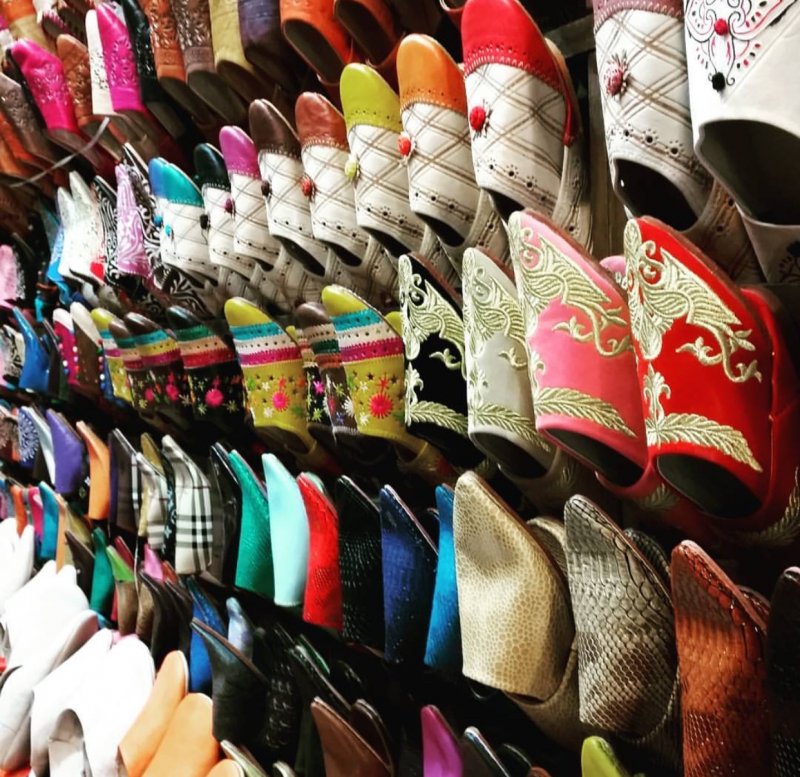
Also known as the babouche, the balgha is a traditional type of shoe in Morocco. Soft and slipper like, the leather footwear can be worn both inside and outdoors. (It’s still normal, though, to take shoes off when walking on carpets in a home.)
Balgha are made in various colours and range from the rather plain to those that are ornately decorated. Traditionally made in Fez, the slippers are found in souks all across the nation. While sturdier shoes are often preferred today for everyday activities, the balgha is often worn for special events and during religious celebrations.
Henna
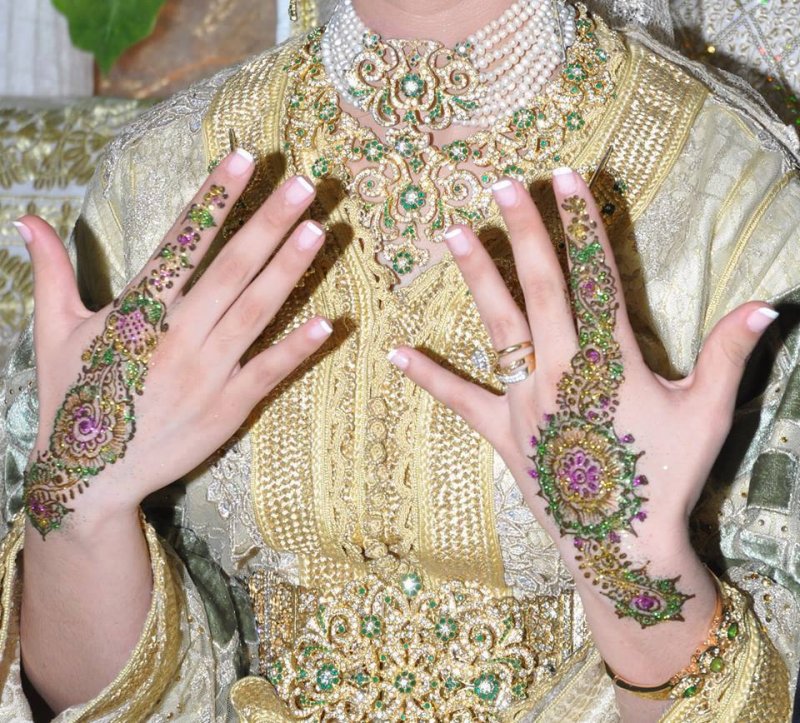
Henna skin designs have great significance in Morocco. Although visually appealing, the use of henna is often seen as having more than just an aesthetic value. Traditional Berber beliefs see henna designs as bringing good luck and helping to ward off ill fortunes.
The khamsa hand symbol, diamonds, and eyes are common features in intricate henna tattoos, along with flowery patterns, swirls, and geometric forms.
The henna party is an important part of wedding rituals, and it is also often applied by married women for celebrations and festivals.
It also played a traditional role in circumcision ceremonies. Henna may also be used by men to color their beards when grey starts to set in, and by both men and women to color their hair.
Where to Buy Traditional Moroccan Clothes
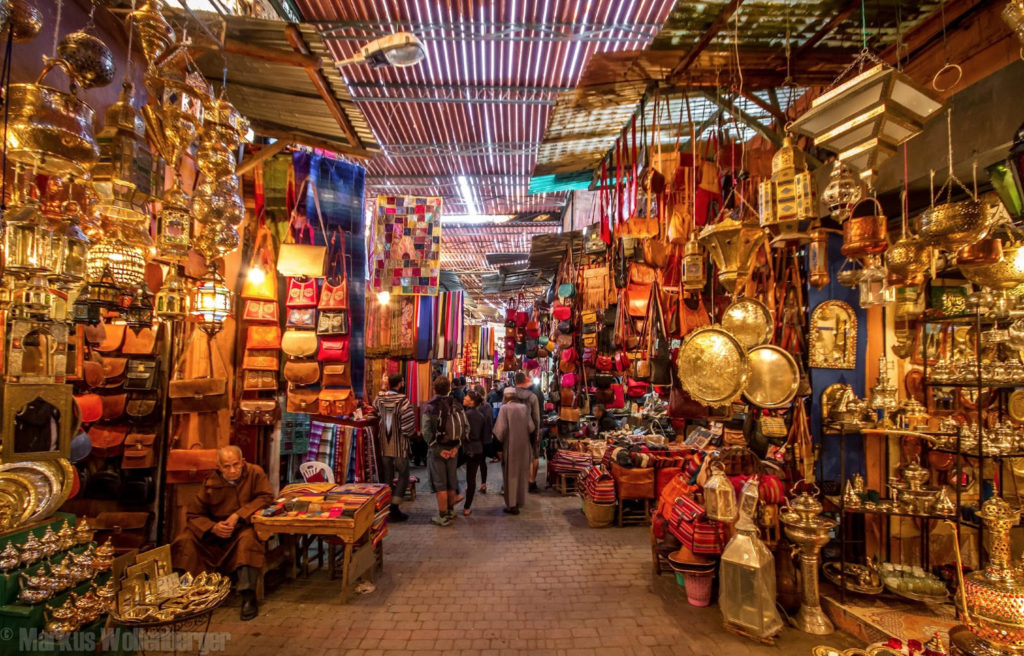
The best places to buy authentic traditional Moroccan clothing are often the country’s souks. Stroll around the bustling market places and it’s only a matter of time before you come across stalls selling clothing.Some sellers specialise in one particular type of garment, while others have a general selection. Do remember that haggling is often expected.
The sprawling souks of Marrakech and Fez are especially known for their wide assortment of goods, including clothes.
For high-quality and beautiful kaftans and tackchitas, however, you may be best to visit a specialist store.There are plenty of fashion shops in Marrakech’s newer area of Gueliz, and you’ll find even more treasures in the old industrial quarter of Sidi Ghanem. Traditional Moroccan garments are so easy to find!